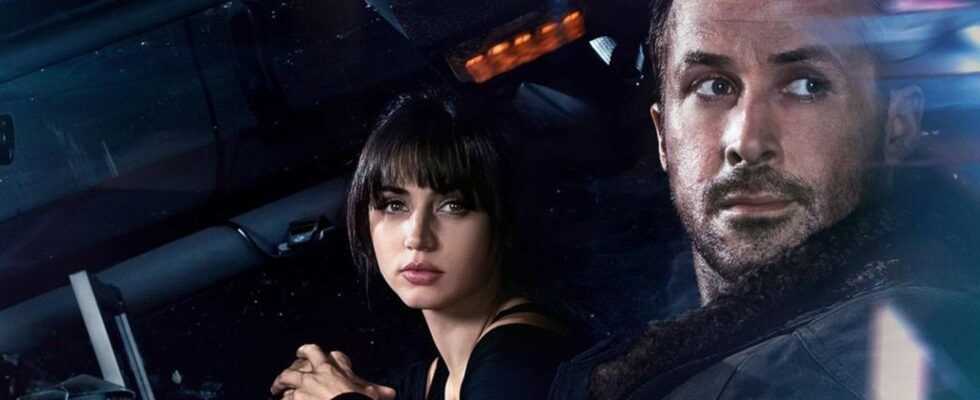"Blade Runner 2049" has everything that was the original. Denis Villeneuve is not resting on Ridley Scott's laurels.
A flying car torments itself through the smog-covered air, so thick that it can be cut up. Shimmering ballerinas dance through the streets below – holograms the size of houses. We are back. Back to the future. 1982 director Ridley Scott (82) granted with "Blade Runner" such a depressing, gloomy and existentialist view of what awaits us that the audience refused. As did the critics. And especially the responsible film studio, which destroyed the filmmaker's vision with additional "explanatory" voice overs and a quickly put together happy ending for the cinema. "Blade Runner" was a flop at the time – and is rightly cult today. The sequel "Blade Runner 2049" by Denis Villeneuve (52), which can be seen on October 1st on VOX (8:15 pm), also fell short of revenue expectations in the cinema. An absolute shame.
The hunter becomes the hunted: that's what it's all about
LAPD officer K (Ryan Gosling, 39) is more like a bounty hunter than a police officer. K is one of the dreaded Blade Runners, whose primary task is to track down human-like replicants and "retire" with the service weapon. In contrast to the era of Rick Deckard (Harrison Ford, 78), this is now becoming much more difficult. While the "Nexus 6" replicas of that time still had a built-in lifespan of a maximum of four years, the successor models can now be as old as a normal person.
When K has just taken care of one of the submerged replicants, he pauses briefly at a tree that died long ago in the middle of nowhere. A flower placed there prompted him to take this unusually sentimental step. Little does he suspect that with his discovery, which at first appears insignificant, he has set events in motion that could forever tear the boundary between replicants and their creators. Events that seem to be closely related to his own existence.
When is a man a person?
As one of the first science fiction films, "Blade Runner" posed the question, which seems overused nowadays, as to whether artificially created living beings can become so human that they have a right to life. In the meantime, films like "Ex Machina" and even series like "Star Trek: The Next Century" in the episode "Who Owns Data?" done enough, one might think. Nevertheless, "Blade Runner 2049" manages to give a new facet to the search for artificial humanity, which was coined in 1950 by mathematician Alan Turing.
This time Blade Runner K is sent on an existentialist journey. A journey with as many narrative hooks as a rabbit running for its life. With "Blade Runner" one was concerned with the question of whether Deckard is a replicant himself. K now has to grapple with other equally important questions. The nice thing about it: Each new twist blends homogeneously into what is shown at the end of the two and a half hours of running at the latest. Like Kai, they don't jump out of the box unexpectedly, just to get the hell out of there and, contrary to logic, cause a surprise. No, this "M. Night Shyamalan trap" luckily bypasses "Blade Runner 2049". But what cannot be emphasized enough: In order to appreciate the film with all its facets, it is essential to have seen "Blade Runner" beforehand!
Pretty hideous
The world shown in the sequel is beautifully repulsive. A dream for fans of the original and a prime example of a dystopian future. "Blade Runner 2049" gives even more insights into the sad loneliness in the midst of a crowded big city juggernaut, which every individual seems to be – whether human or replicant. Only the oversized, brightly shining symbols of commerce in all their colors and shapes bring a little light into the darkness that scolds everyday life.
In this depressing representation, "Blade Runner 2049" remains true to its original and cleverly complements it. Once it was Ford who strode through the streets of the future like a film noir icon of the Humphrey Bogart brand that had fallen through time. Now it's Gosling, 30 years later. Even if, so much is revealed, under completely different, no less captivating omens. In the relationship – let's call it love – with his hologram wife, memories of the film "Her" are irrevocably awakened. With them, "Blade Runner 2049" ensures the most emotional moments of the film – apart from the last shot …
Poetry of Evil
But there is also something missing. A multi-layered antagonist à la Rutger Hauer, who once wrote film history with his final monologue: "I've seen things that you humans would never believe. Gigantic ships that burned outside the Orion's shoulder. And I've seen C-Beams, glittering in the dark, near the Tannhauser Tor. All these moments will be lost in time, like tears in the rain. Time to die. " No less philosophical, but much more diabolical, Jared Leto (48) alias Niander Wallace now acts as the villain. In order to achieve his goals, the influential owner of the new replicant factory walks over corpses – of people and replicants. In direct comparison to Hauer, however, he couldn't look paler.
Conclusion:
Blade Runner 2049 does the trick of continuing a film that didn't need a sequel. Similar to "Terminator 2 – Judgment Day" or "Aliens – The Return" did. In contrast to the film itself, the reason for this is simple: Denis Villeneuve has managed to pack enough new, own ideas into the corset of the original. Together with great actors, incredible visual effects and a gripping story.
